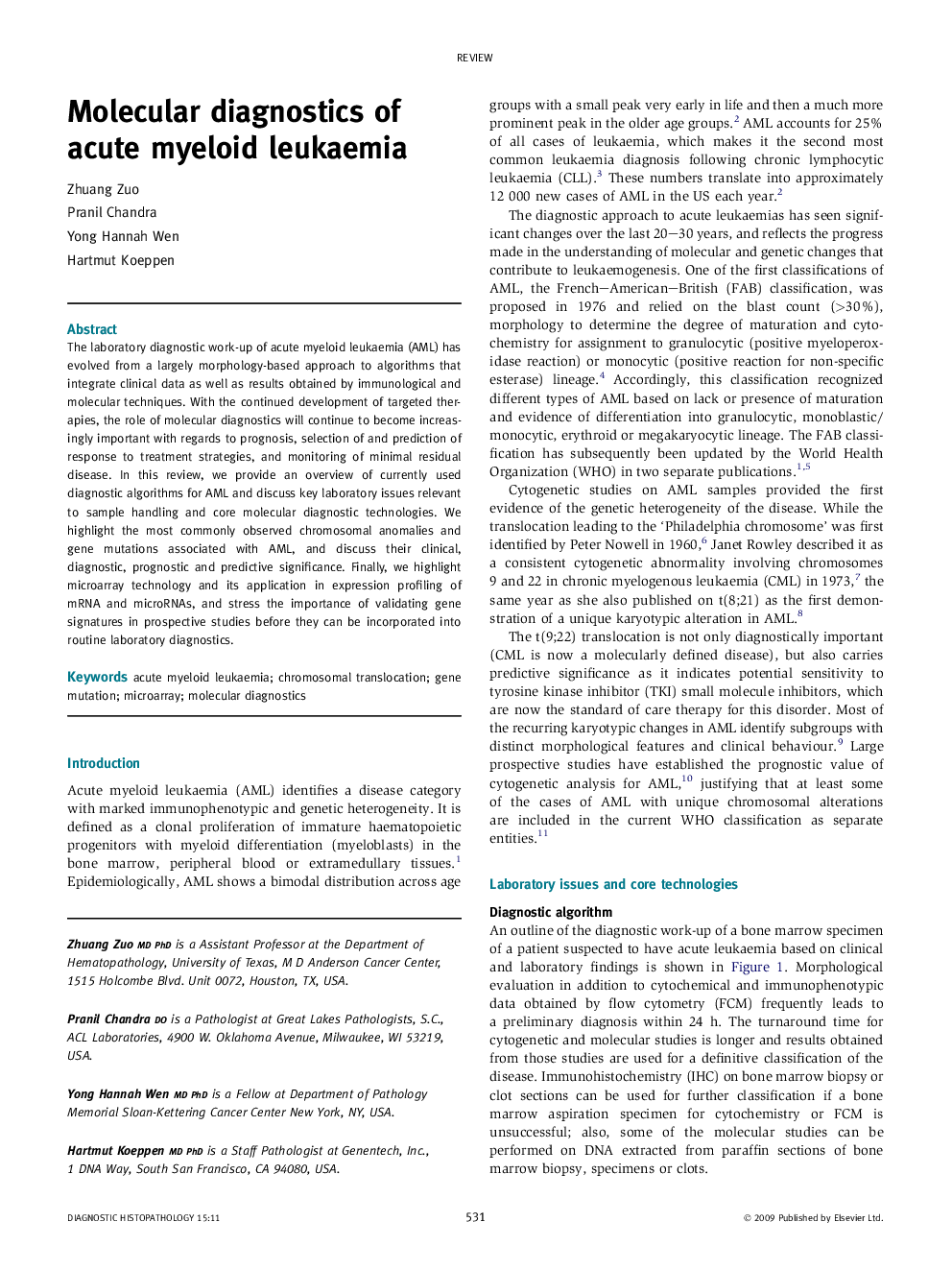| Article ID | Journal | Published Year | Pages | File Type |
|---|---|---|---|---|
| 4131696 | Diagnostic Histopathology | 2009 | 9 Pages |
The laboratory diagnostic work-up of acute myeloid leukaemia (AML) has evolved from a largely morphology-based approach to algorithms that integrate clinical data as well as results obtained by immunological and molecular techniques. With the continued development of targeted therapies, the role of molecular diagnostics will continue to become increasingly important with regards to prognosis, selection of and prediction of response to treatment strategies, and monitoring of minimal residual disease. In this review, we provide an overview of currently used diagnostic algorithms for AML and discuss key laboratory issues relevant to sample handling and core molecular diagnostic technologies. We highlight the most commonly observed chromosomal anomalies and gene mutations associated with AML, and discuss their clinical, diagnostic, prognostic and predictive significance. Finally, we highlight microarray technology and its application in expression profiling of mRNA and microRNAs, and stress the importance of validating gene signatures in prospective studies before they can be incorporated into routine laboratory diagnostics.
